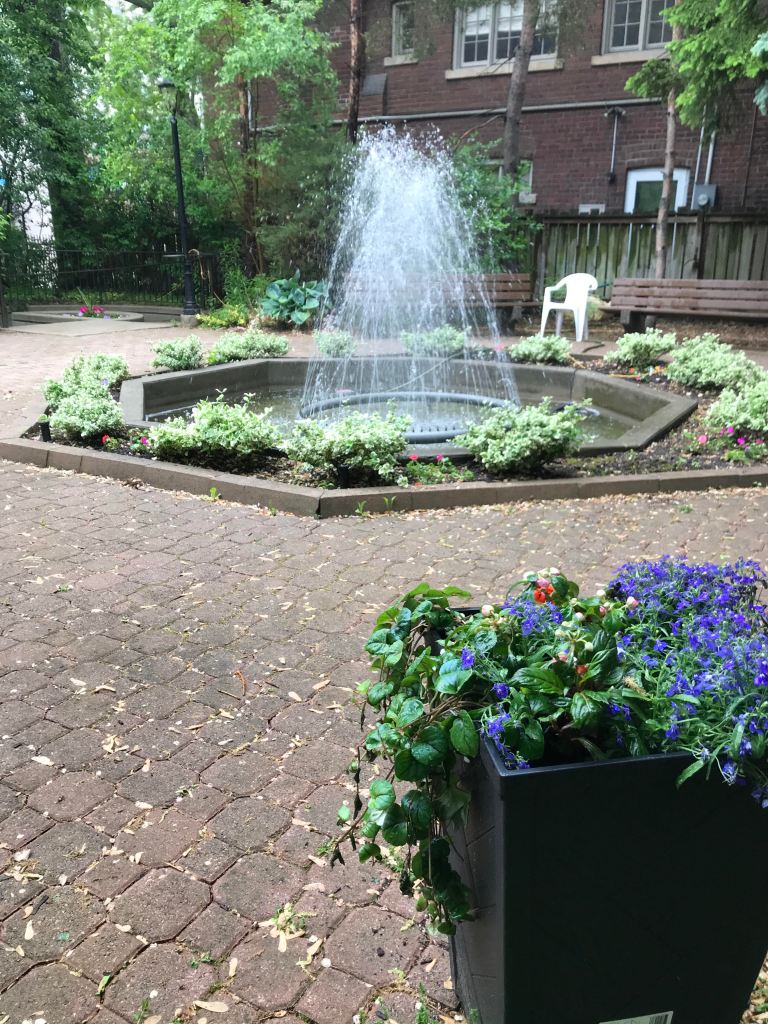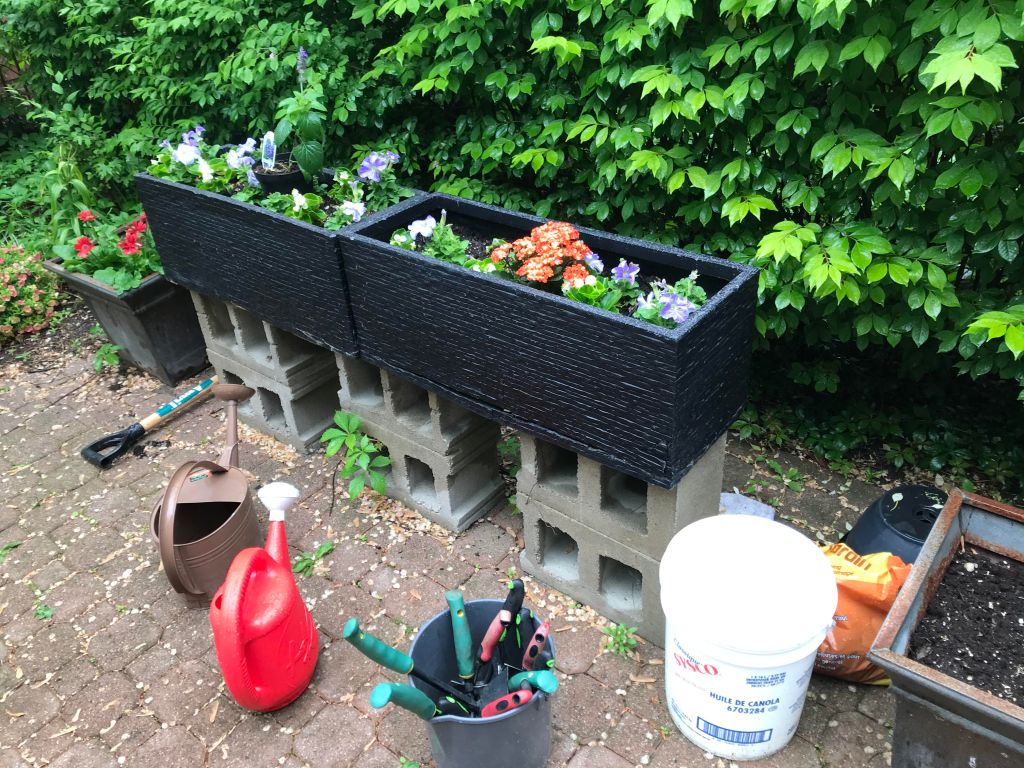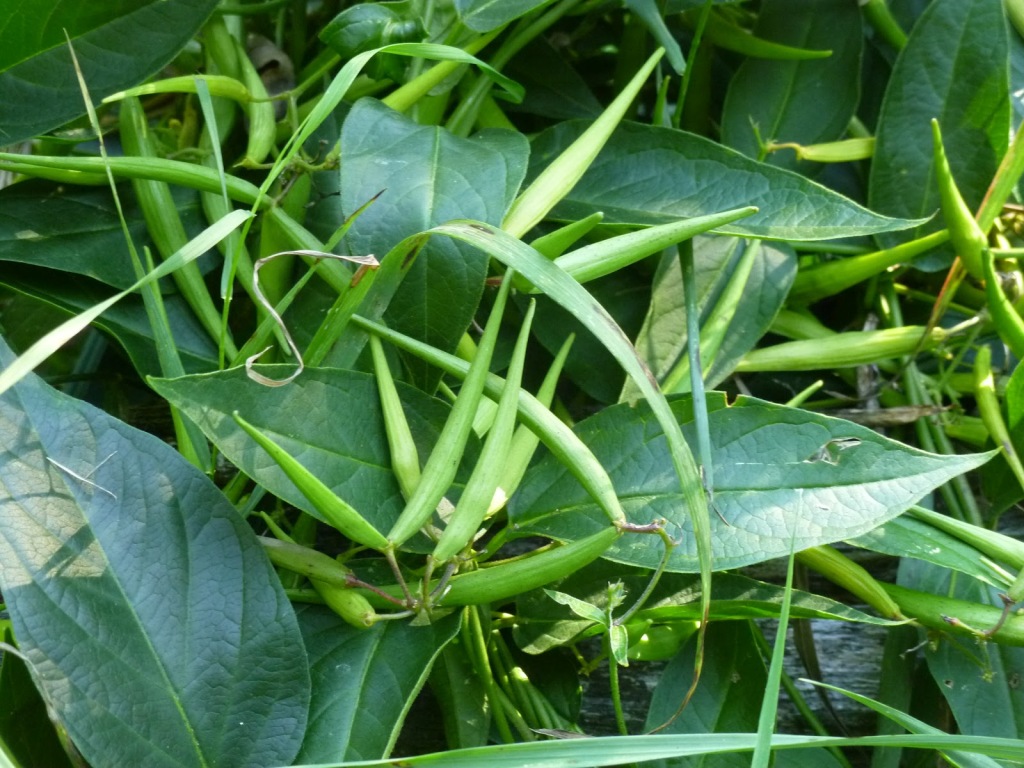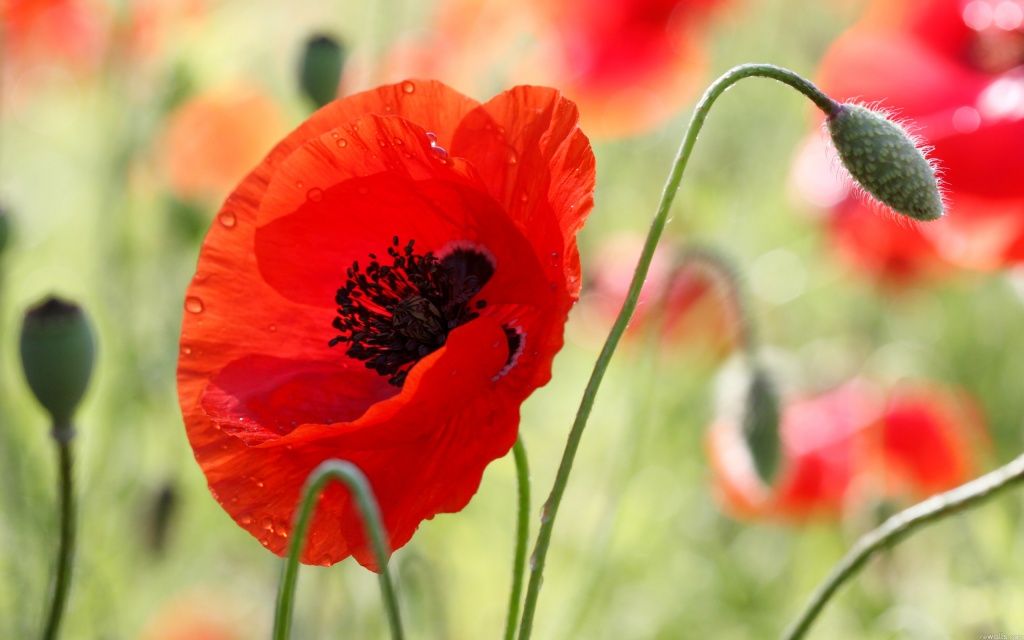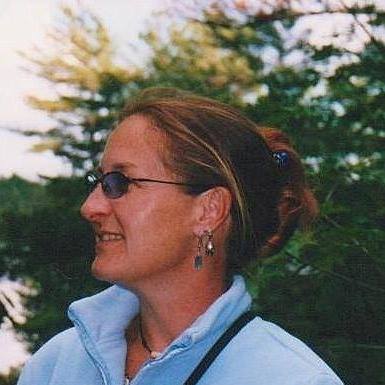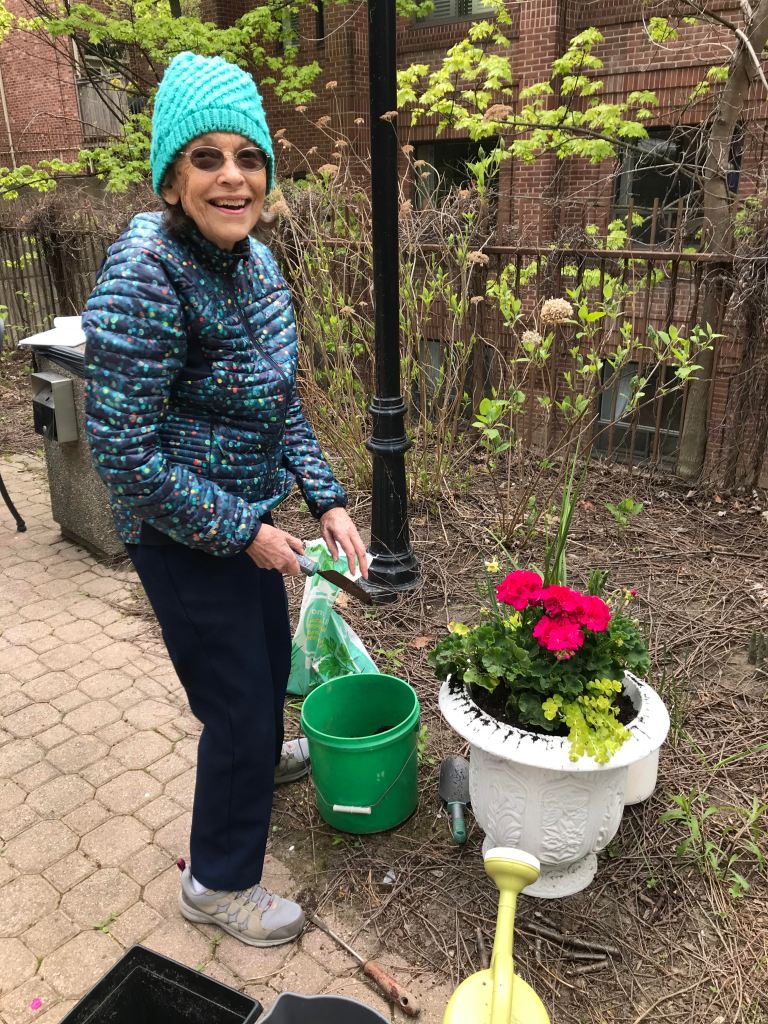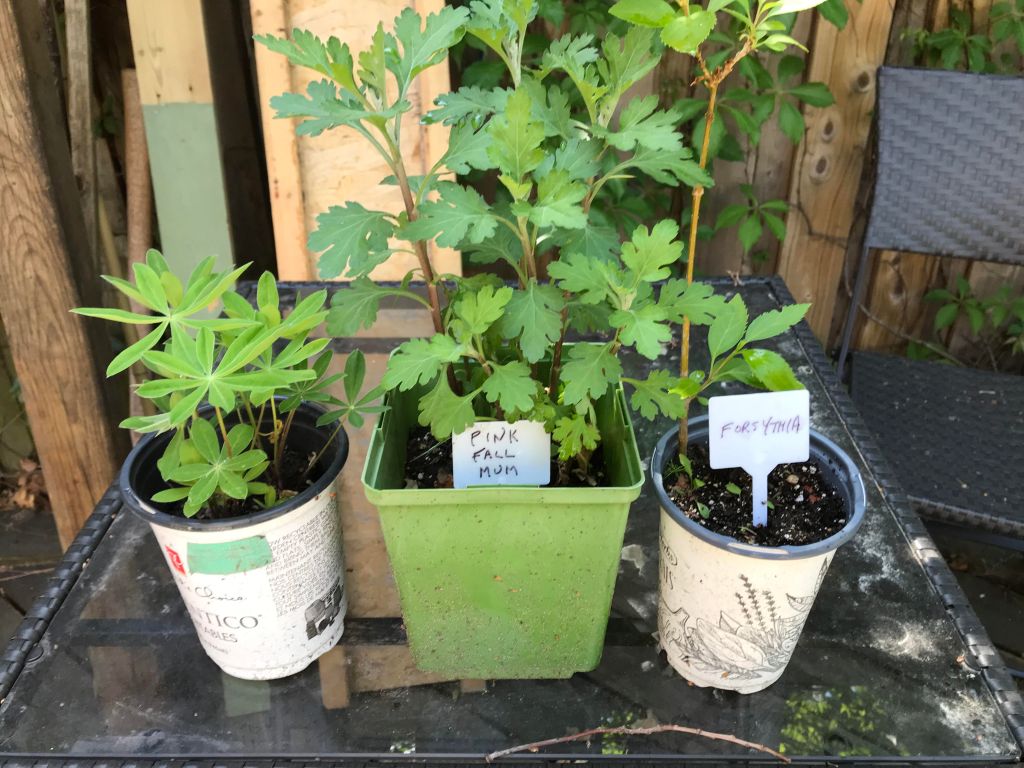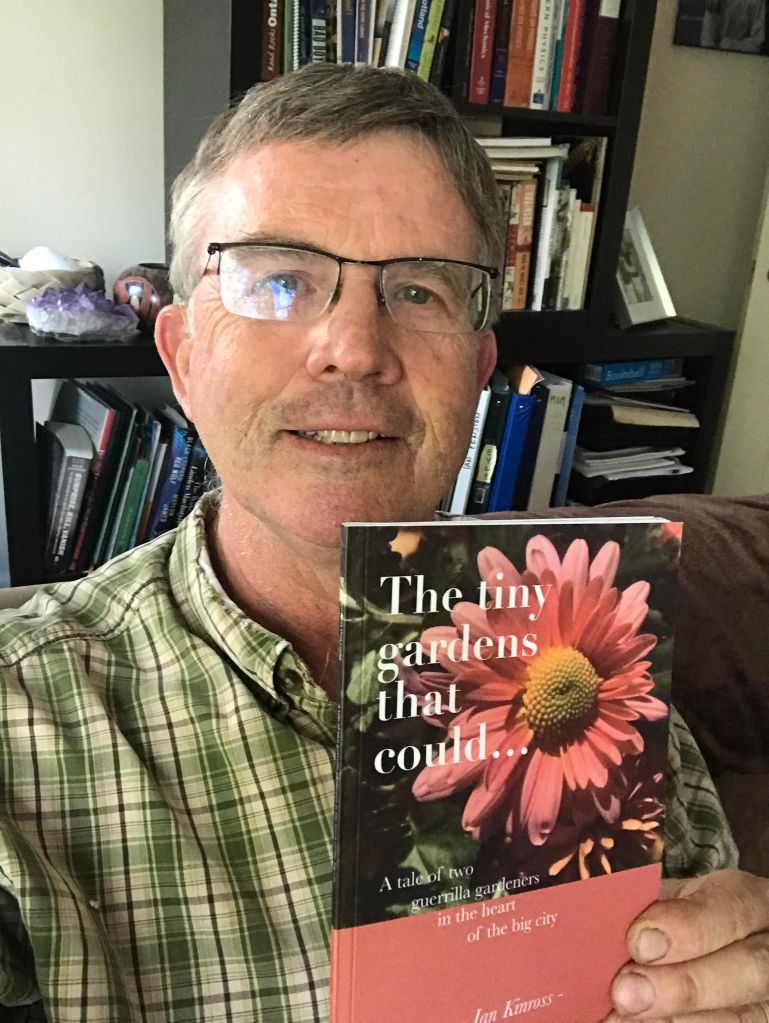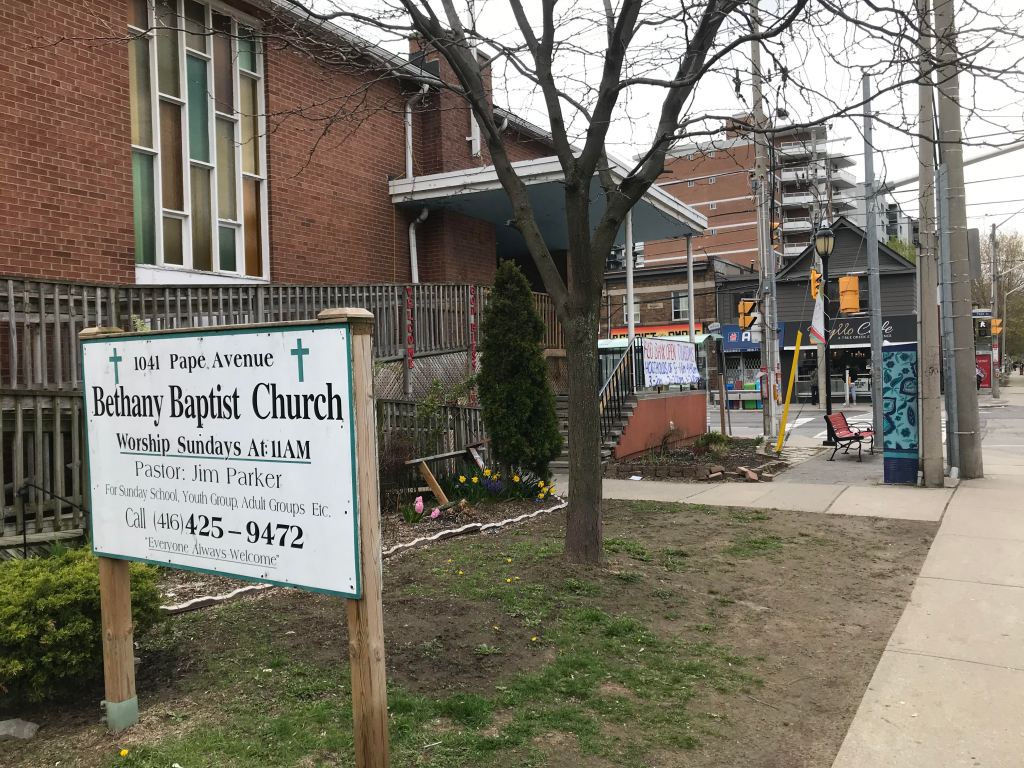Mom is at it again. With a group of half a dozen fellow gardeners living at her seniors home, she is beautifying a little park next door.
It was a tough winter for seniors living under covid restrictions. Spring offered a chance to get some fresh air and add some splashes of colour and greenery at the tiny Sunrise Park just a stone’s throw from the front entrance of Revera Bradgate Arms.
The parkette, used by local residents, is dedicated to Toronto resident Ernest Seitz, who composed the popular song The World is Waiting for the Sunrise a hundred years ago. The title is apt as the world turns the corner on the global pandemic.
As the city warmed up this spring, my Mom Sheila and her fellow residents took to the garden to plant geraniums, gerbera, impatiens, begonia, delphinium, marigold, cosmos, pansies, petunias and other annuals. They uncovered perennials like roses in need of some TLC. They weeded, watered, clipped, mulched and tidied, transforming patches of dirt into palettes of living colour. They set up hummingbird feeders. They wore out the program staff and volunteers who helped. They shared stories about the gardens they had loved and nurtured in Toronto, Leamington, Port Hope, Saskatchewan and beyond.
Gardening as a senior is not easy — health, mobility and strength challenges can make simple tasks difficult. But these seniors persevered.
On a sunny weekend in June, the parkette they are beautifying hosted the first live music concert at their retirement home since the beginning of the pandemic — a cello/violin duo.
Mom’s a lifetime gardener, and when she and dad moved from their house to a condo in retirement, she became a guerrilla gardener, maintaining three flower beds to beautify public space in a nearby Don Mills park. When she downsized again, she gardened covertly but happily in a parkette near the Rosedale Subway Station, sometimes walking there three times a day to keep the flowers watered on steamy summer days. Her tiny garden put a smile on the faces of many passersby.
Her best gardening days may be behind her, and memory and health are a challenge, but in summer 2021 Mom is back at it. And as restrictions eased, she visited one of her favourite places — Edwards Gardens in Don Mills, now the Toronto Botanical Garden.
A shout out to Mom and her fellow gardeners. And to Revera recreation staff Mark and PJ for their inspiration, hard work and support throughout the pandemic.
Mom is the fourth gardener to take up the Guerrilla Garden challenge this year. For stories of Jayne’s seed scattering, Debi’s tree-planting, and Donna’s native species stewardship, see the previous posts in this blog. Who will be next?
Two-tiered garden beds planted by Revera Bradgate Arms residents this spring.


